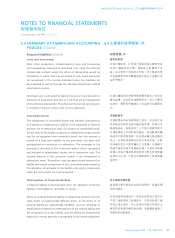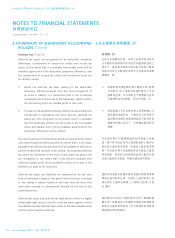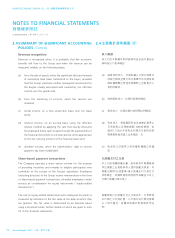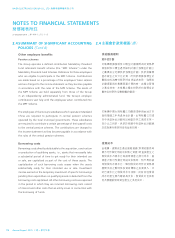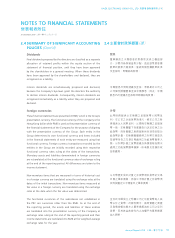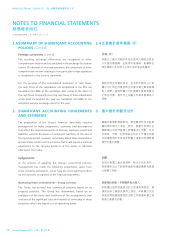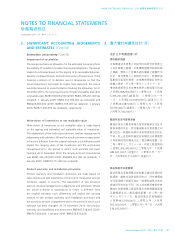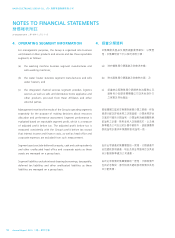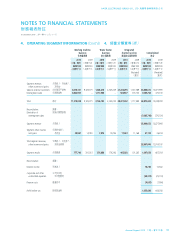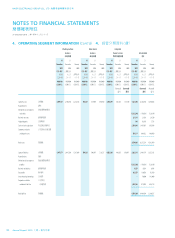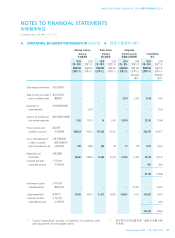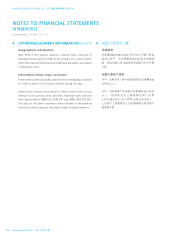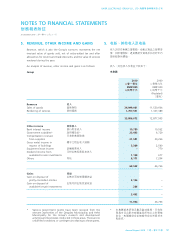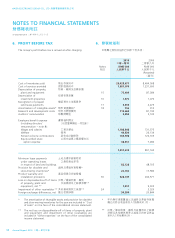Haier 2010 Annual Report Download - page 121
Download and view the complete annual report
Please find page 121 of the 2010 Haier annual report below. You can navigate through the pages in the report by either clicking on the pages listed below, or by using the keyword search tool below to find specific information within the annual report.31 December 2010
二零一零年十二月三十一日
NOTES TO FINANCIAL STATEMENTS
財務報表附註
HAIER ELECTRONICS GROUP CO., LTD 海爾電器集團有限公司
Annual Report 2010 二零一零年年報 119
3. SIGNIFICANT ACCOUNTING JUDGEMENTS
AND ESTIMATES (Cont’d)
Judgements (Cont’d)
Classification between investment properties and owner-
occupied properties
The Group determines whether a property qualifies as an investment
property, and has developed criteria in making that judgement.
Investment property is a property held to earn rentals or for capital
appreciation or both. Therefore, the Group considers whether a
property generates cash flows largely independently of the other
assets held by the Group. Some properties comprise a portion
that is held to earn rentals or for capital appreciation and another
portion that is held for use in the production or supply of goods or
services or for administrative purposes. If these portions could be
sold separately or leased out separately under a finance lease, the
Group accounts for the portions separately. If the portions could
not be sold separately, the property is an investment property only
if an insignificant portion is held for use in the production or supply
of goods or services or for administrative purposes. Judgement is
made on an individual property basis to determine whether ancillary
services are so significant that a property does not qualify as an
investment property.
Estimation uncertainty
The key assumptions concerning the future and other key sources
of estimation uncertainty at the end the of reporting period, that
have a significant risk of causing a material adjustment to the
carrying amounts of assets and liabilities within the next financial
year, are discussed below.
Impairment of non-financial assets (other than goodwill)
The Group assesses whether there are any indicators of impairment
for all non-financial assets at the end of each reporting period.
Indefinite life intangible assets are tested for impairment annually
and at other times when such an indicator exists. Other non-
financial assets are tested for impairment when there are indicators
that the carrying amounts may not be recoverable. An impairment
exists when the carrying value of an asset or a cash-generating
unit exceeds its recoverable amount, which is the higher of its fair
value less costs to sell and its value in use. The calculation of the
fair value less costs to sell is based on available data from binding
sales transactions in an arm’s length transaction of similar assets or
observable market prices less incremental costs for disposing of the
asset. When value in use calculations are undertaken, management
must estimate the expected future cash flows from the asset or
cash-generating unit and choose a suitable discount rate in order
to calculate the present value of those cash flows.
3. 重大會計判斷及估計
(續)
判斷
(續)
投資物業及擁有者自佔物業之分類
本集團須決定物業是否合資格列為投資物業,
並已制訂作出判斷之條件。投資物業指持作賺
取租金或資本增值之物業。因此,本集團須考
慮物業所產生之現金流量是否大致獨立於本集
團所持之其他資產。若干物業包括持作賺取租
金或資本增值之部分及持作生產或供應貨品或
服務或行政用途之部分。若該等部分可分開出
售(或根據融資租約分開出租),則本集團將各
部分獨立入賬。若該等部分不可分開出售,則
物業僅於持作生產或供應貨品或服務或行政用
途之部分並不重大時,方會列作投資物業。本
集團按個別基準判斷物業之附帶服務是否重大
而導致物業不合資格列為投資物業。
估計之不明朗因素
以下為大有可能導致下一財政年度之資產及負
債賬面值須作重大調整之未來主要假設及報告
期末其他主要估計不明朗因素主要來源。
非財務資產之減值(商譽除外)
本集團於各報告期末評估所有非財務資產是否
出現任何減值跡象。無限年期之無形資產每年
及於出現減值跡象之其他時候測試減值。其他
非財務資產於有跡象顯示賬面值可能無法收回
時測試減值。資產公平值或現金產生單位超逾
可回收金額時,即高出其公平值減出售成本及
使用值,減值予以確認。計量公平值減出售成
本時,按約束銷售交易根據公平合理基準交易
類似資產可得數據,或可得市價減出售資產所
產生之應計費用而得出。當計算使用價值時,
管理層必須估計來自資產或現金產生單位之預
期未來現金流量,並選擇合適之貼現率以計算
該等現金流量之現值。


